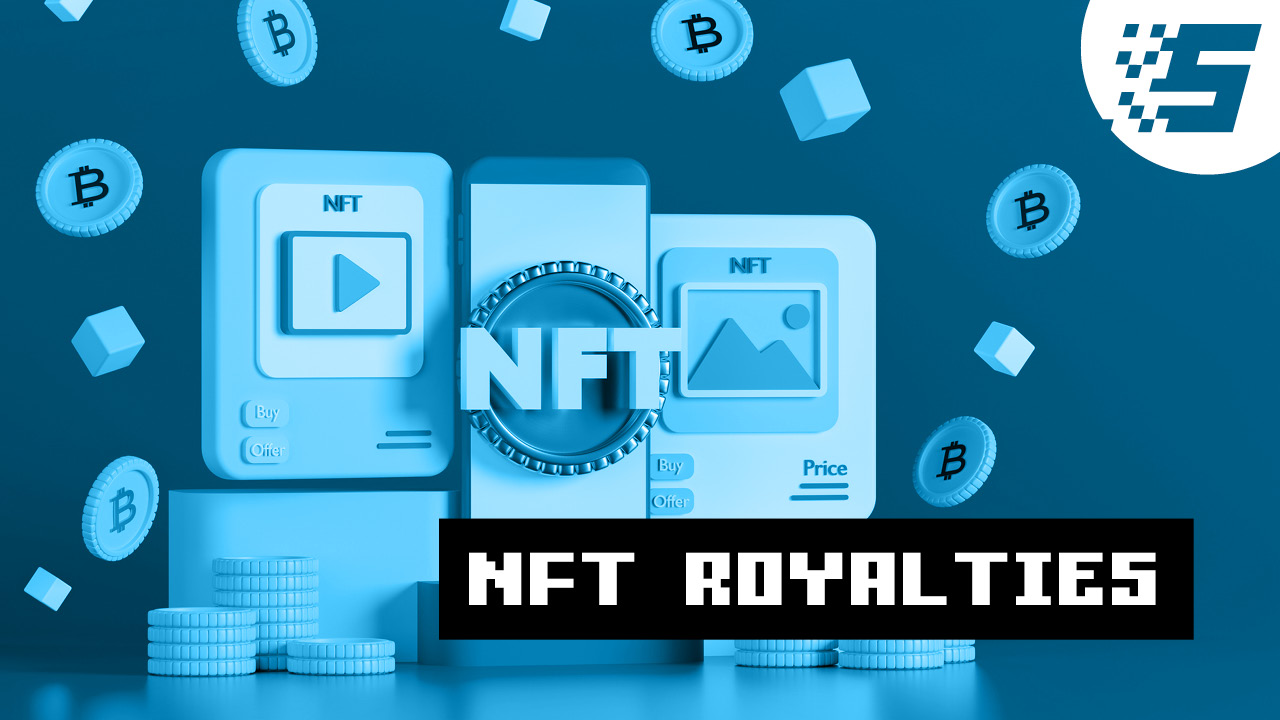
NFT Royalties: How it Benefits Creators and Users
NFT royalties are values of dividends paid to NFT creators each time there is a secondary sale. The terms and conditions are coded in smart contracts.
Hence, once there is a secondary sale, the smart contract ensures that it carries out the terms. In this way, creators receive a profit cut without needing an intermediary.
Meanwhile, not all NFTs generate royalties. Instead, only those that have royalties added to their smart contracts do. The process is automatically carried out after the sale of an NFT, and the blockchain records the transaction.
This process enables content creators and artists to earn maximally from their work. In addition, if the NFT becomes popular, its creator will earn more. After all, popularity will drive an increase in sales.
NFT royalties have influenced countless creators and artists to delve into the NFT ecosystem. It allows them to maximize their creative potential and earn maximally from their creations.
Most royalties range from 2.5 to 10% of the total sale. Thus, it serves as the primary source of income for the creator. According to Digital Galaxy, artists have earned over $1.8 billion as royalties over the years. These huge earnings contribute to why NFT creators decide to mint their works in the first place.
How does it work?
NFT royalties work differently from one blockchain to another. In the case of Ethereum, smart contract platforms manage royalties at their discretion. This article will take a case study of two NFT marketplaces, Rarible and Opensea.
How NFT royalties work on Rarible
At the minting stage, artists can set the percentage they will get after every secondary sale of their artwork. A smart contract executes the transaction during purchase. It is noteworthy that the terms do not mean that it is legally binding.
Before posting content on Rarible, creators must grant the platform royalty-free rights to this content. Rarible’s maximum royalty for content creators is as high as 50%.
How NFT royalties work on Opensea
Opensea only allows royalties for a collection of NFTs, not a single piece. Therefore, if an NFT with a royalty policy is sold on a different marketplace, then later listed on Opensea, the NFT creator will not have any income from the resale.
On the contrary, if an artist transfers NFTs from Opensea to another marketplace, he could realize the royalties if he registers the collection. Also, the maximum royalty on Opensea is 10%. In recent times, Opensea has been contemplating making royalties optional. This move is due to the effect of the crypto winter on NFT sales.
Benefits of NFT royalties
How it benefit artists and creators
NFT royalties create opportunities for artists to maximize their earning potential. They have the copyrights to their works while they can still sell the NFTs. Moreover, if they wish, they can sell their copyrights to others. The new owners can then earn royalties due to these rights.
Similarly, NFT royalties encourage creators to continue producing quality NFTs as long as they will sell. So, whether you’re a musician, artist, or content creator, you can use your NFT to obtain royalties. For instance, Jaques Green’s “Another girl” track earned him $27000 royalties in 2021. Meanwhile, he plans to release the track ten years earlier.
Besides Jaques Green, other notable artists are using NFTs technology to increase sales of their content. At the same time, they generate royalties as much as they can.
The bottom line is every time there is a secondary sale; creators will earn royalties.
How NFT royalties benefit marketplaces
Since NFT royalties are a means by which content creators earn passive income, NFT marketplaces must enforce them.
For instance, the X2Y2 NFT marketplace earlier introduced optional royalties. However, after backlash from NFT communities, the platform decided to backtrack. Thus, X2Y2 recently announced that it would enforce all royalties on old and new NFT collections.
Tyler Hobbs, an NFT artist, has started adding NFT marketplaces that do not enforce royalties to a denylist. In time, other artists might follow suit. Thus, marketplaces that do not enforce royalties might start experiencing a shortage of digital assets to sell or auction, making them run out of business.
How it benefit users
The recent surge in demand for NFTs has shown the value of these digital assets. Investors who bought and resold virtual assets raked in tons of money. Yet, it would not be possible if NFT creators and artists didn’t make these assets.
Furthermore, NFT royalties prevent buyers and users from paying outrageous fees. Instead, minimal fees are deducted when they pay for NFT assets. The fee, in turn, serves as royalties for the original creators.
Recent impact of the economy on NFT royalties
The bearish market condition has led to low demand for NFTs. It has also influenced some NFT marketplaces to make royalties optional or drop them.
This decision has also affected the host blockchains of these NFTs. For example, Magic Eden supports both Ethereum and Solana-based NFTs. However, the platform plans to drop royalties on the NFTs of both blockchains. Yet, Magic Eden is not planning to stop royalties on Cardano-based NFTs.
Due to this event, Cardano’s NFT volume was higher than Solana’s in October. Some experts believe that demand for royalties contributed to the occurrence.
The take-home here is that an artist-friendly environment usually attracts new NFT artists and minting. In contrast, marketplaces that choose to remove royalties either get blocklisted or lose NFT collections from artists.
Conclusion
As earlier noted, NFT royalties serve as a means for NFT creators and artists to earn passive income. This incentive encourages them to create and mint new digital assets into the NFT ecosystem. All stakeholders in NFT transactions benefit in one way or the other.
As the crypto winter bites harder, marketplaces will decide if they will continue to enforce royalties or make it optional. They might also have to face the implications of their decisions.


